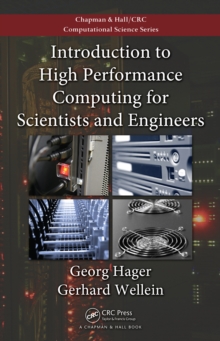
Elements of Parallel Computing PDF
by Eric Aubanel
Part of the Chapman & Hall/CRC Computational Science series
Description
Designed for introductory parallel computing courses at the advanced undergraduate or beginning graduate level, Elements of Parallel Computing presents the fundamental concepts of parallel computing not from the point of view of hardware, but from a more abstract view of algorithmic and implementation patterns. The aim is to facilitate the teaching of parallel programming by surveying some key algorithmic structures and programming models, together with an abstract representation of the underlying hardware. The presentation is friendly and informal. The content of the book is language neutral, using pseudocode that represents common programming language models.
The first five chapters present core concepts in parallel computing. SIMD, shared memory, and distributed memory machine models are covered, along with a brief discussion of what their execution models look like. The book also discusses decomposition as a fundamental activity in parallel algorithmic design, starting with a naive example, and continuing with a discussion of some key algorithmic structures. Important programming models are presented in depth, as well as important concepts of performance analysis, including work-depth analysis of task graphs, communication analysis of distributed memory algorithms, key performance metrics, and a discussion of barriers to obtaining good performance.
The second part of the book presents three case studies that reinforce the concepts of the earlier chapters. One feature of these chapters is to contrast different solutions to the same problem, using select problems that aren't discussed frequently in parallel computing textbooks. They include the Single Source Shortest Path Problem, the Eikonal equation, and a classical computational geometry problem: computation of the two-dimensional convex hull. After presenting the problem and sequential algorithms, each chapter first discusses the sources of parallelism then surveys parallel algorithms.
 
Information
-
Download - Immediately Available
- Format:PDF
- Pages:222 pages
- Publisher:CRC Press
- Publication Date:08/12/2016
- Category:
- ISBN:9781351979511
Other Formats
- Hardback from £180.00
- Paperback / softback from £62.99
- EPUB from £51.02
Information
-
Download - Immediately Available
- Format:PDF
- Pages:222 pages
- Publisher:CRC Press
- Publication Date:08/12/2016
- Category:
- ISBN:9781351979511










